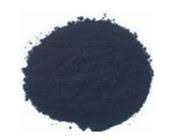Exploring Sustainable Practices in Indigo Dye Production and Seed Cultivation for Eco-friendly Textiles
The Journey of Indigo Dye Seeds From Factory to Fabric
Indigo dye, revered for its deep blue hue and historical significance, has an intriguing journey that begins with indigo dye seeds. This article delves into the fascinating world of indigo dye seed factories, exploring their role in the production of one of the oldest dyes known to humanity.
The Significance of Indigo Dye
Indigo has been treasured across cultures for centuries, from the ancient Egyptians to the indigenous peoples of the Americas and Africa. Its vibrant color has adorned everything from silk to denim, making it a staple in the fashion industry. The dye is derived from the leaves of the indigo plant, primarily *Indigofera tinctoria* and various species of *Isatis*. However, the production of indigo dye begins long before the leaves can be processed; it starts with the seeds.
The Seed A Catalyst for Production
Indigo dye seeds are essential for cultivating indigo plants. They are carefully harvested from mature indigo pods, which are then dried and processed to ensure viability. Factories that focus on indigo dye seeds play a crucial role in ensuring the quality and availability of these seeds for farmers and commercial growers. These factories often employ advanced techniques in seed processing, including selection, cleaning, and packaging, to guarantee that only the highest quality seeds reach the market.
Sustainable Practices and Innovations
As the demand for indigo dye increases, especially in eco-conscious fashion circles, many seed factories are adopting sustainable practices. Organic farming methods, such as crop rotation and the use of natural fertilizers, are being prioritized to enhance soil health and reduce environmental impact. Additionally, some factories are exploring regenerative agriculture techniques, which aim to restore and enhance biodiversity. This not only benefits the production of indigo but also contributes positively to the ecosystem.
Incorporating technology, many seed factories are also investing in research and development to improve seed quality and yield. Modern breeding techniques are being used to develop indigo varieties that are more resistant to pests and diseases, further enhancing productivity and sustainability in the indigo supply chain.
indigo dye seeds factories

The Impact on Local Economies
Indigo dye seed factories are not just pivotal for the production of dye; they also significantly impact local economies. By providing farmers with high-quality seeds and the necessary training on cultivation techniques, these factories empower agricultural communities. This leads to increased yields and income for farmers, allowing them to sustain their livelihoods.
Moreover, as the popularity of indigo dye grows in the fashion industry, farmers who cultivate indigo can benefit from direct access to local and international markets. Many seed factories collaborate with fashion brands aiming to source naturally dyed fabrics, connecting farmers directly with industry players and promoting fair trade practices.
The Future of Indigo Dye
As we look ahead, the future of indigo dye seed factories appears promising. With the resurgence of interest in natural and sustainable dyes, these facilities will play a vital role in the indigo supply chain. By continuing to innovate and adopt sustainable practices, they can ensure the long-term viability of indigo cultivation.
Furthermore, the growing trend of eco-fashion underscores the potential for indigo dye to remain relevant in contemporary art and design. As consumers become more conscious of their purchasing decisions, the demand for sustainable and ethically produced indigo textiles is likely to rise.
Conclusion
In summary, indigo dye seeds and their associated factories are integral to the vibrant world of indigo dyeing. From their crucial role in supporting eco-friendly agricultural practices to empowering local economies and responding to the demand for sustainable fashion, these factories exemplify the harmony that can be achieved between tradition and innovation. As we embrace the beauty and history of indigo, we should also advocate for responsible practices that honor both the artisans and the environment.
-
The Timeless Art of Denim Indigo Dye
NewsJul.01,2025
-
The Rise of Sulfur Dyed Denim
NewsJul.01,2025
-
The Rich Revival of the Best Indigo Dye
NewsJul.01,2025
-
The Enduring Strength of Sulphur Black
NewsJul.01,2025
-
The Ancient Art of Chinese Indigo Dye
NewsJul.01,2025
-
Industry Power of Indigo
NewsJul.01,2025
-
Black Sulfur is Leading the Next Wave
NewsJul.01,2025

Sulphur Black
1.Name: sulphur black; Sulfur Black; Sulphur Black 1;
2.Structure formula:
3.Molecule formula: C6H4N2O5
4.CAS No.: 1326-82-5
5.HS code: 32041911
6.Product specification:Appearance:black phosphorus flakes; black liquid

Bromo Indigo; Vat Bromo-Indigo; C.I.Vat Blue 5
1.Name: Bromo indigo; Vat bromo-indigo; C.I.Vat blue 5;
2.Structure formula:
3.Molecule formula: C16H6Br4N2O2
4.CAS No.: 2475-31-2
5.HS code: 3204151000 6.Major usage and instruction: Be mainly used to dye cotton fabrics.

Indigo Blue Vat Blue
1.Name: indigo blue,vat blue 1,
2.Structure formula:
3.Molecule formula: C16H10N2O2
4.. CAS No.: 482-89-3
5.Molecule weight: 262.62
6.HS code: 3204151000
7.Major usage and instruction: Be mainly used to dye cotton fabrics.

